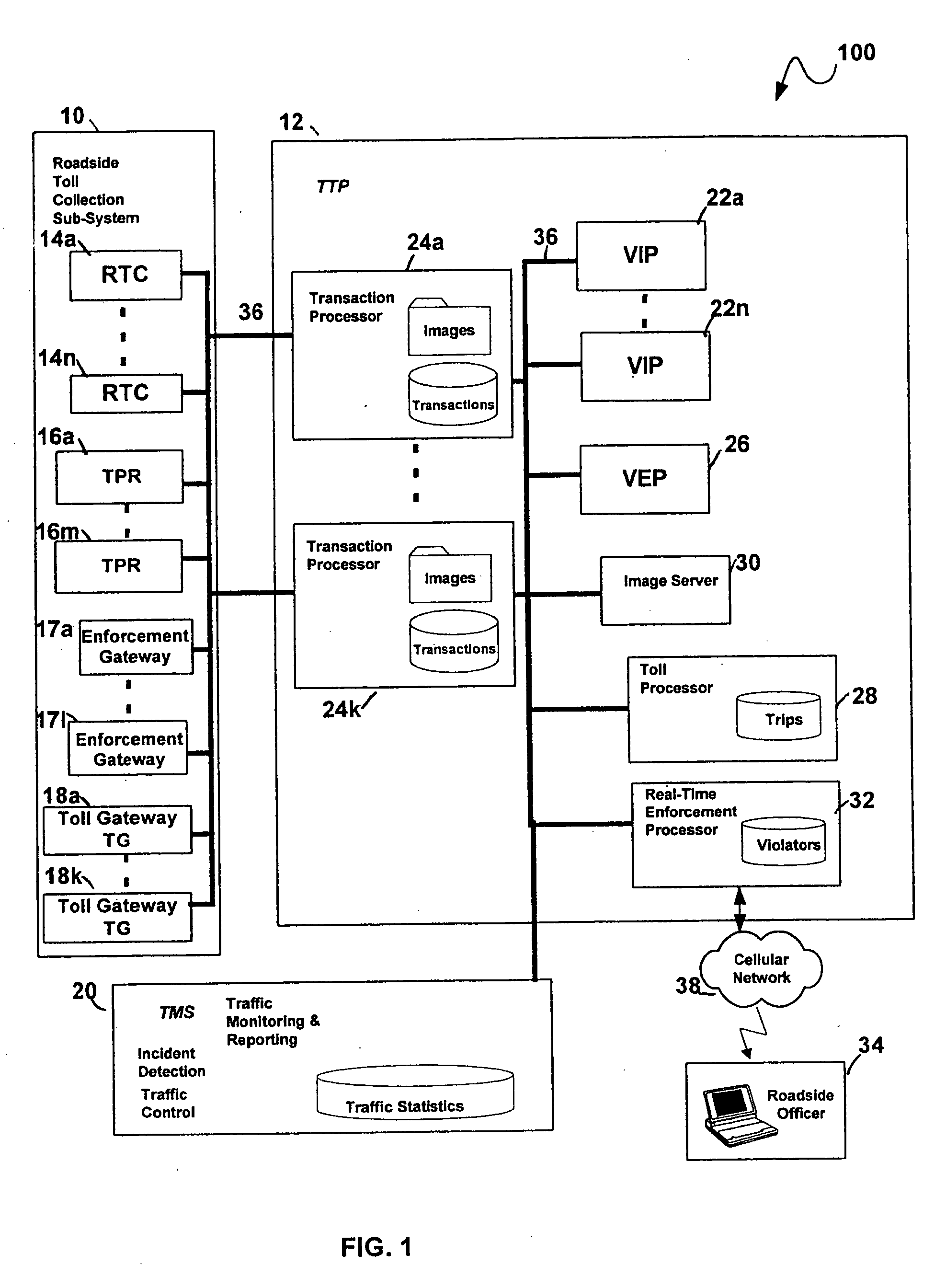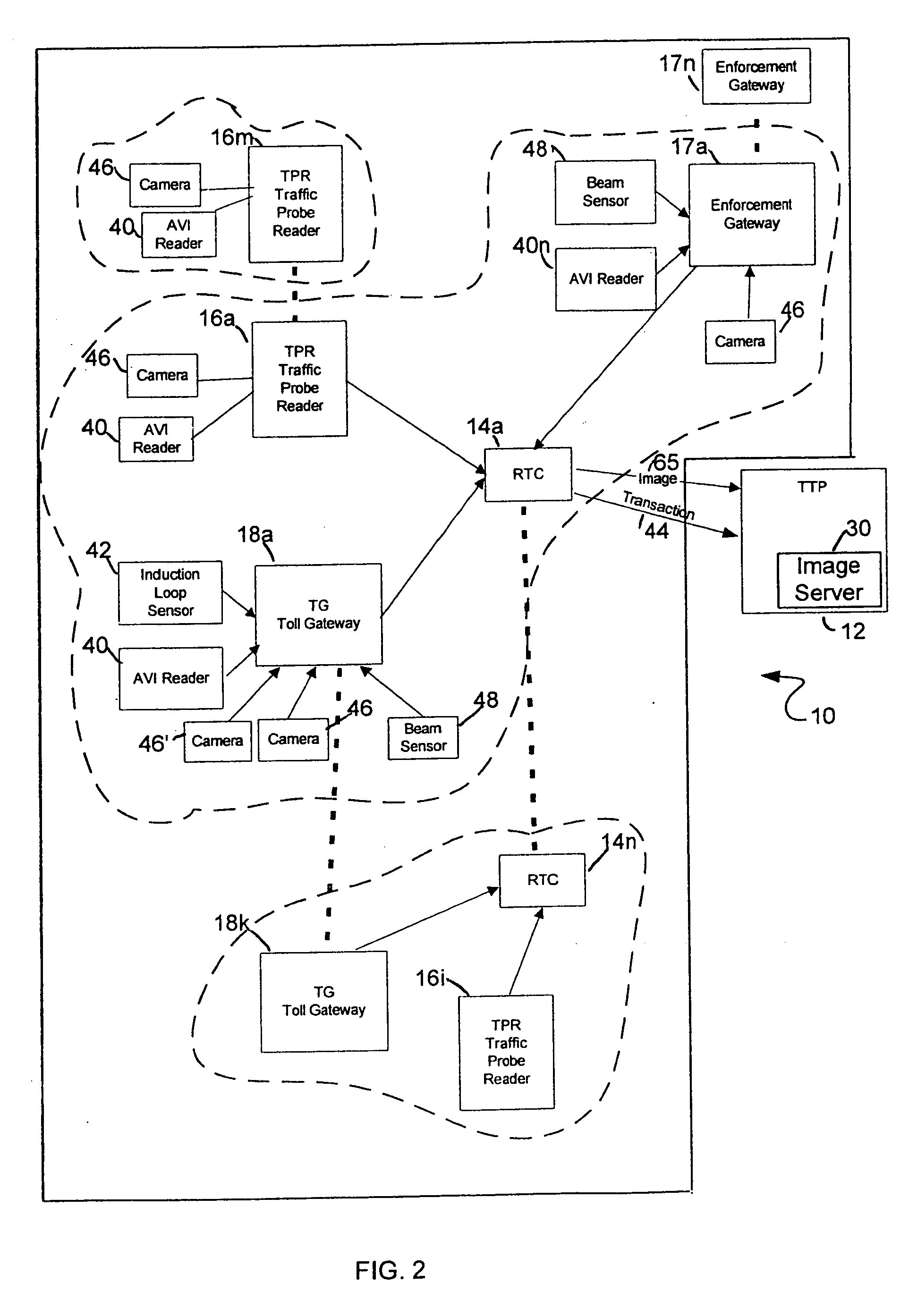[0008] In accordance with the present invention, a method for reading a license plate disposed on a vehicle includes determining whether a license plate image is required, automatically processing the license plate image in response to determining that the license plate image is required, providing at least one verified image, and determining whether to manually read the license plate image by matching the license plate image with the at least one verified image. With such a technique, it is possible to determine when a license plate should be read manually by a human operator to supplement an automatic reading in order to increase plate reading accuracy and to reduce the overall number of manual reads.
[0009] In accordance with another aspect of the present invention, the method further includes correlating the license plate image with the at least one verified image, providing a match confidence measure and determining whether the license plate image should be read manually in response to comparing a match confidence measure to a predetermined match threshold With such a technique, image correlation of a license plate with a reliable stored image and available toll collection data improves the accuracy of the license plate reading system and reduces the number of manual reads.
[0010] In accordance with another aspect of the present invention, a method for reading a license plate disposed on a vehicle traveling within a toll collection system includes providing a first plurality of vehicle detections, determining a second plurality of vehicle detections which potentially form a trip, determining whether the second plurality of vehicle detections includes at least one license plate image; and automatically processing the at least one license plate image. With such a technique, several transactions can be combined into a single trip for billing purposes, for improving the accuracy of the license plate reading system and for reducing the number of manual reads.
[0011] In accordance with another aspect of the present invention, a method is provided for correlating the data with previously read data to obtain information on each of the plurality of vehicles, determining the number of each of the plurality of vehicles potentially affected by incidents along the roadway. Additionally, the method includes the step of comparing the number of each of the plurality of vehicles potentially affected by incidents to a sample threshold. With such a technique, the method can reduce incorrect license plate number determinations by analyzing data from widely spaced automatic vehicle identification (AVI) readers and license plate readers along a roadway. With such a technique, license plate identifications are more accurately determined than by using only image processing methods to determine license plate numbers, and such a technique does not rely on a high volume of manual reads by human operators.
[0013] In accordance with a further aspect the present invention, a system for reading a vehicle license plate includes a plurality of roadside toll collectors providing a plurality of vehicle license plate images and a plurality of vehicle transactions, at least one transaction processor coupled to the plurality of roadside toll collectors, receiving the plurality of images and transactions, and at least one video image processor coupled to the at least one transaction processor and adapted to receive the images and for providing a corresponding license plate number. The system further includes a video exception processor coupled to the at least one transaction processor and adapted to receive the images and to display the images such that the vehicle license plate is read manually, and a toll processor coupled to the at least one transaction processor and adapted to minimize the number of manual reads. With such an arrangement, an automatic roadway toll collection and management system maintains and applies a set of historical plate images to achieve error reduction making use of a pattern matcher for selecting which plate images should be read / re-read by an operator to minimize plate read errors without incurring substantial additional operational cost by considering information related to a vehicle's trip in addition to the historical license plate image information. Such an arrangement solves the problem of the requirement for a relatively large number of manual license plate read operations by performing verifications and multiple reads only on those images likely to be in error. Thus, most images can be read only once, and in a system that utilizes OCR, the result is that most of the license plate images can completely bypass an operator without significantly degrading performance or increasing customer complaints. Such an arrangement makes use of, but is not limited to, automatic image processing techniques such as optical character recognition and image correlation.
[0014] In accordance with another aspect of the present invention, a method for reading a license plate to detect violators includes automatically recognizing the license plate number from a license plate image; determining that the vehicle license plate number is included in a list of violators subject to law enforcement, automatically displaying an alert, and automatically updating the location of the vehicle. Using this technique, law enforcement officers are free to patrol the entire road without the need to wait at a gateway for long periods of time until a violator is detected. Enforcement coverage can also be effectively provided for all gateways with only a few officers.
 Login to View More
Login to View More  Login to View More
Login to View More 


